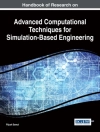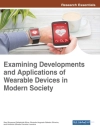The key social issues of health, medicine, the environment, food and safety cannot be addressed without the support of chemical sensors and biosensors, whose performance is constantly improving in terms of reliability and cost, particularly in the production of autonomous devices connected to the Internet.
Obtaining high-intensity transduction signals arising from the interaction of an analyte and a sensor, enabling the identification and dosage of a given compound, requires the selection of suitable physical measurement methods and the creation of structures that react specifically to different types of analyte.
Nanotechnologies and Nanomaterials Applied to Chemical Sensors and Biosensors details recent advances in the field of sensor design using carbon-based nanomaterials (graphene, carbon nanotubes, carbon quantum dots, etc.) and inorganic nanomaterials (metallic nanoparticles, nanocrystals, transition metal dichalcogenides, etc.), as well as a variety of physical sensing methods (electrochemical, piezoelectric, electromagnetic, optic, optoelectronic, etc.).
Inhoudsopgave
Introduction ix
Part 1. Nanomaterials, Amplification, Separation, Recognition and Transduction 1
Chapter 1. Nanomaterials 3
1.1. Carbon nanomaterials 3
1.2. Inorganic nanomaterials 32
1.3. Conclusions 49
Chapter 2. Separation and Amplification Techniques 53
2.1. Principle of the PCR technique applied to the concentration amplification of DNA traces 53
2.2. Sequencing techniques 57
2.3. Separation techniques for product mixtures 61
2.4. Conclusions 87
Chapter 3. Recognition Principles 89
3.1. The different molecular or chemical identification techniques 90
3.2. Sensor networks and artificial intelligence 108
3.3. Conclusions 112
Chapter 4. Physico-chemical Transduction Techniques 115
4.1. Electrochemical methods 116
4.2. Piezoelectricity for gravimetric analysis 124
4.3. Field effect transistors 128
4.4. Optical and optoelectrochemical detection methods 139
4.5. Conclusions 178
Part 2. Environmental and Biological Sensors 181
Chapter 5. Ion and Gas Sensors 183
5.1. Membrane electrodes for potentiometric p H measurement 184
5.2. Ion selective electrodes (ISE) 186
5.3. Gas sensors 200
5.4. Conclusions 232
Chapter 6. Biosensors for Health 235
6.1. Blood sugar, uremia and cholesterol 236
6.2. Biomarkers 254
6.3. Pathogens 275
6.4. Conclusions 286
Conclusion 287
References 289
Index 333
Over de auteur
Pierre Camille Lacaze is former Director of the ITODYS laboratory and former President of the Division de Chimie Physique of the Société chimique de France. He is Professor Emeritus at Paris Cité University, France, and his research focuses on interface reactions between chemical compounds and electrode materials.
Benoît Piro is Professor at Paris Cité University, France, Deputy Director of the Department of Advanced Materials Science and Nanotechnology at the Hanoi University of Science and Technology, Vietnam, and Operational Director of PRINTUP Institute. His research focuses on printed electronics applied to sensors of all kinds.
Jean-Christophe Lacroix is Professor and Director of the Chemistry Department at Paris Cité University, and former Deputy Director of the ITODYS laboratory. His research focuses on nanoelectrochemistry, nanostructured modified surfaces, plasmonics and molecular electronics.












